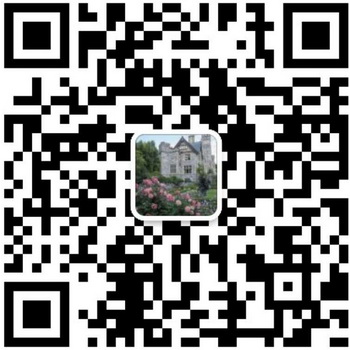Stone knowledge

Test Method for Natural Decorated Stone--Test Method for Volume Density, True Density, True Porosity and Water Absorption
1. Subject content and scope of application
This standard prescribes the equipment, test and test procedure of the volume density, true density, true porosity and water absorption of natural facing stone. Calculations and test results.
This standard is suitable for the test of volume density, true density, true porosity and water absorption of natural decorative stone.
2. Citation criteria
Measurement of Volume Density of Piezoelectric Ceramics GB 2413
Test Method for Apparent Porosity, Water Absorption, Volume Density and True Porosity of Dense Formed Refractories GB 2997
3. Principle and definition of methods
The principle and definition of the method are the same as GB 2413 and GB 2997.
4. Test equipment
4.1 Electrothermal dryer: from room temperature to 200 C.
4.2 scales:
A. Maximum weighing 1000g, sensibility 10mg.
B. The maximum weight is 100g and the sensitivity is 1mg.
4.3 Vernier Caliper: Scale is 0.02mm.
4.4 specific gravity bottle: volume 25-30 mL.
4.5 Standard screen: 240 target quasi-screen.
4. Sample and 2 preparation
5.1 Volume Density Sample
The sample size is 50 mm cube 5 pieces.
5.2 True Density Specimens
Select about 1000g sample, clean the surface and break it into particles less than 5 mm, shrink it to 150 g by quartering method, grind it into powder by ceramic grinding bowl and pass 240 target quasi-sieve, put the powder sample into weighing bottle, put it in the oven at 105 2 C, dry for more than 4 hours, take it out, cool it slightly, put it in the dryer and cool it to room temperature.
5. Test steps
6.1 Volume Density
The sample was cleaned with a brush and dried for 24 hours in an oven at 105 2 C. The sample was taken out and cooled to room temperature. Its mass (m0) was said to be accurate to 0.02g. The sample was then placed in distilled water at room temperature, soaked for 48 hours, removed, wiped off the surface moisture with a twisted wet towel, and immediately weighed the mass (m1), accurate to 0.02g. Then the samples were hung in the net basket. The net basket and the samples were immersed in distilled water at room temperature, and their mass (m2) in the water was weighed up to 0.02g. The weighing device is shown in the figure below (omitted).
6.2 True Density
Three samples were weighed, each 10g (m0). Each sample was put into a clean specific gravity bottle, and distilled water was poured into it. The specific gravity bottle was boiled in distilled water for 10-15 minutes to remove bubbles in the sample. Or put the specific gravity bottle in the vacuum dryer to remove bubbles. After removing bubbles, dry the specific gravity bottle and cool it to room temperature. Fill it with distilled water at the label. Rinse the specific gravity bottle with the weighing mass (m2) and fill it with distilled water at the label. Also call it mass (m1), m0, m1, m2, accurate to 0.002g.
6. Result calculation
7.1 Volume density p B (g/cm 3).
According to the test results in 6.1, the volume density is calculated according to formula (1):
M0
Rho= --- * Rho w.......................................................................................................................................................................................... (1)
M 1 m 2
In formula: m0-11 dry sample in air quality, g;
The mass of m1-water saturated sample in air, g;
M2 - Water saturated sample mass in water, g;
Rho W - Density of water at room temperature, g/cm3.
7.2 True Density P t(g/cm 3)
According to the test results in 6.2 items, the true density is calculated according to formula (2):
M0
Rho=-------*rho w..................... (2)
M0+m1-m2
In formula: the mass of m011 dry powder sample in air, g;
M1- The specific gravity bottle containing only distilled water plus water quality, g;
M2- the weight of the specific gravity bottle filled with powder and water, g;
PW - p w in the same equation (1).
7.3 True stomatal porosity p a (%)
According to formula (1), (1) volume density and true density, true porosity is calculated by formula (3):
Rho B
P a= (1-)*100................................................................................................. (3)
Rho t
In the formula, the bulk density of the sample is P B 11, g/cm 3:
The true density of the samples is g/cm3.
7.4 Water absorption Wa(%)
According to the test data of 6.1 items, the water absorption is calculated according to formula (4):
M 1 0
Wa=(-)*100........................ (4)
M0
In formula: the mass of m0-11 dry sample in air, g;
The mass of m1-11 water saturated sample in air, G.
8. Test results
The average, maximum and minimum values of volume density, true density, water absorption and true porosity were calculated.
Volume density and true density are calculated to three effective numbers. True porosity and water absorption are calculated to two effective numbers.
This standard prescribes the equipment, test and test procedure of the volume density, true density, true porosity and water absorption of natural facing stone. Calculations and test results.
This standard is suitable for the test of volume density, true density, true porosity and water absorption of natural decorative stone.
2. Citation criteria
Measurement of Volume Density of Piezoelectric Ceramics GB 2413
Test Method for Apparent Porosity, Water Absorption, Volume Density and True Porosity of Dense Formed Refractories GB 2997
3. Principle and definition of methods
The principle and definition of the method are the same as GB 2413 and GB 2997.
4. Test equipment
4.1 Electrothermal dryer: from room temperature to 200 C.
4.2 scales:
A. Maximum weighing 1000g, sensibility 10mg.
B. The maximum weight is 100g and the sensitivity is 1mg.
4.3 Vernier Caliper: Scale is 0.02mm.
4.4 specific gravity bottle: volume 25-30 mL.
4.5 Standard screen: 240 target quasi-screen.
4. Sample and 2 preparation
5.1 Volume Density Sample
The sample size is 50 mm cube 5 pieces.
5.2 True Density Specimens
Select about 1000g sample, clean the surface and break it into particles less than 5 mm, shrink it to 150 g by quartering method, grind it into powder by ceramic grinding bowl and pass 240 target quasi-sieve, put the powder sample into weighing bottle, put it in the oven at 105 2 C, dry for more than 4 hours, take it out, cool it slightly, put it in the dryer and cool it to room temperature.
5. Test steps
6.1 Volume Density
The sample was cleaned with a brush and dried for 24 hours in an oven at 105 2 C. The sample was taken out and cooled to room temperature. Its mass (m0) was said to be accurate to 0.02g. The sample was then placed in distilled water at room temperature, soaked for 48 hours, removed, wiped off the surface moisture with a twisted wet towel, and immediately weighed the mass (m1), accurate to 0.02g. Then the samples were hung in the net basket. The net basket and the samples were immersed in distilled water at room temperature, and their mass (m2) in the water was weighed up to 0.02g. The weighing device is shown in the figure below (omitted).
6.2 True Density
Three samples were weighed, each 10g (m0). Each sample was put into a clean specific gravity bottle, and distilled water was poured into it. The specific gravity bottle was boiled in distilled water for 10-15 minutes to remove bubbles in the sample. Or put the specific gravity bottle in the vacuum dryer to remove bubbles. After removing bubbles, dry the specific gravity bottle and cool it to room temperature. Fill it with distilled water at the label. Rinse the specific gravity bottle with the weighing mass (m2) and fill it with distilled water at the label. Also call it mass (m1), m0, m1, m2, accurate to 0.002g.
6. Result calculation
7.1 Volume density p B (g/cm 3).
According to the test results in 6.1, the volume density is calculated according to formula (1):
M0
Rho= --- * Rho w.......................................................................................................................................................................................... (1)
M 1 m 2
In formula: m0-11 dry sample in air quality, g;
The mass of m1-water saturated sample in air, g;
M2 - Water saturated sample mass in water, g;
Rho W - Density of water at room temperature, g/cm3.
7.2 True Density P t(g/cm 3)
According to the test results in 6.2 items, the true density is calculated according to formula (2):
M0
Rho=-------*rho w..................... (2)
M0+m1-m2
In formula: the mass of m011 dry powder sample in air, g;
M1- The specific gravity bottle containing only distilled water plus water quality, g;
M2- the weight of the specific gravity bottle filled with powder and water, g;
PW - p w in the same equation (1).
7.3 True stomatal porosity p a (%)
According to formula (1), (1) volume density and true density, true porosity is calculated by formula (3):
Rho B
P a= (1-)*100................................................................................................. (3)
Rho t
In the formula, the bulk density of the sample is P B 11, g/cm 3:
The true density of the samples is g/cm3.
7.4 Water absorption Wa(%)
According to the test data of 6.1 items, the water absorption is calculated according to formula (4):
M 1 0
Wa=(-)*100........................ (4)
M0
In formula: the mass of m0-11 dry sample in air, g;
The mass of m1-11 water saturated sample in air, G.
8. Test results
The average, maximum and minimum values of volume density, true density, water absorption and true porosity were calculated.
Volume density and true density are calculated to three effective numbers. True porosity and water absorption are calculated to two effective numbers.









 2022-12-17
2022-12-17
 View:1366
View:1366
 Back
Back



